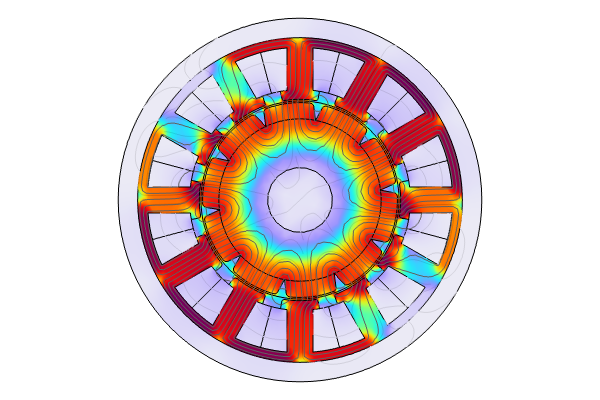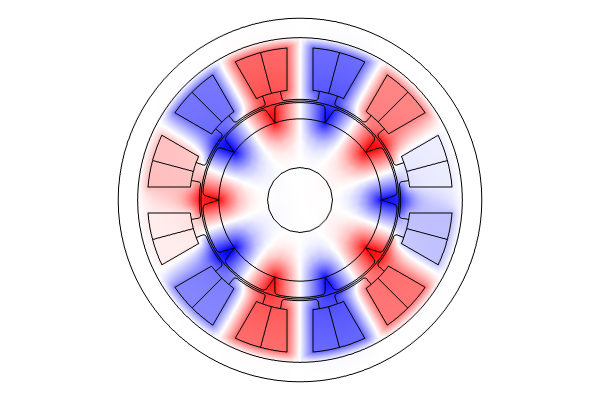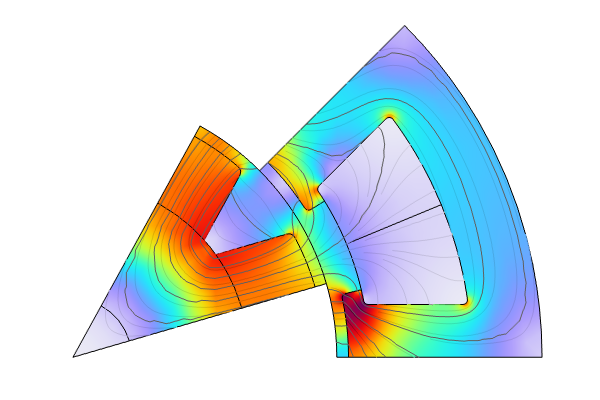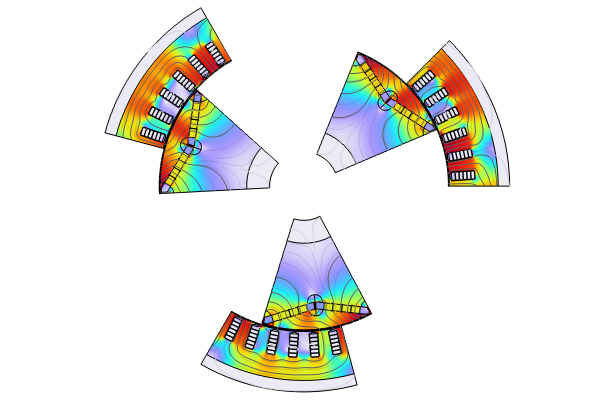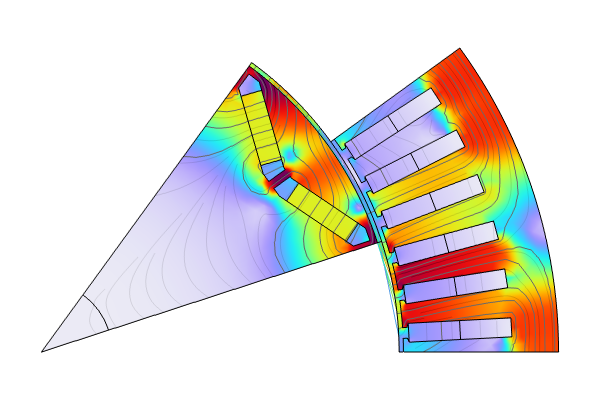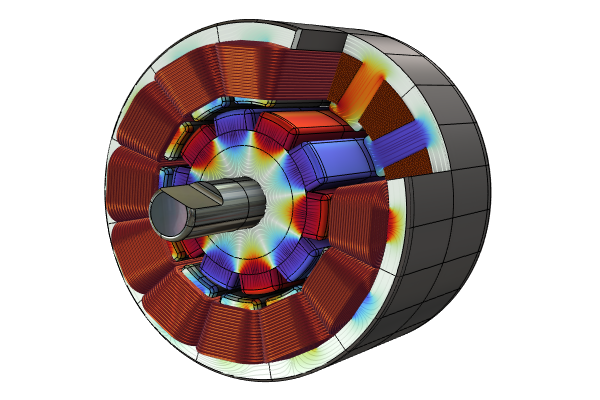Modeling Electric Motors with COMSOL Multiphysics®
In this self-paced motor modeling course, you will have the opportunity to walk through several examples of motor models. You will start with an overview of motor modeling capabilities in COMSOL Multiphysics®. In the first lecture, we will cover the fundamentals of 2D motor models, which can be created and solved relatively quickly due to their limited complexity and computational resource requirements. In later parts of the course, you will learn to debug your motor models and make use of sector modeling for more efficient computation. More complex models will be discussed when we cover the Motor Tutorial Series from the Application Gallery. The last two parts of the course will address time-periodic motor modeling and the details of 3D simulation, respectively. Along the way, you will be provided with materials you can reference and use to further expand your knowledge.
An example of a 3D motor modeled in COMSOL Multiphysics®.Part 1: Introduction to 2D Motor Modeling
- Introduces the fundamental techniques required to model motors in 2D
- Create geometries, set up the physics, mesh, solve, and then evaluate key quantities for 2D motors using both stationary and transient analyses.
Part 2: Debugging and Double-Checking Your Motor Model
- Overview of the most important steps to take when your model results are not aligning with expectations
- Demonstrates approaches for modeling nonlinear materials, rotating meshes, and magnetic excitations such as permanent magnets and windings
Part 3: Sector Modeling for Motors
- Reduce full motor models to a repeating unit called a sector.
- Drastically decrease memory requirements, computational difficulty, and simulation time with a simplified geometry.
Part 4: Demonstrations from the Motor Tutorial Series
- Observe further capabilities of the software through several tutorials which cover more realistic and complex motor models in 2D, 2.5D, and 3D.
- Introduces circuit excitation, rotor skewing, and resolving skin and proximity effects in coils
Part 5: Time-Periodic Motor Modeling
- Find steady-state solutions for nonlinear time-periodic problems with the Magnetic Machinery, Rotating, Time Periodic interface.
- Access and use frequency-domain results in a multiphysics context.
- Walk through several multiphysics examples with guidance on the underlying physics.
Part 6: Introduction to 3D Motor Modeling
- Use the mixed formulation of magnetic scalar and vector potentials.
- Overview of the background theory and practical tips for the implementation
- Learn about building 3D coil geometries, meshing for 3D motors, and gauge fixing.
Envoyer des commentaires sur cette page ou contacter le support ici.



